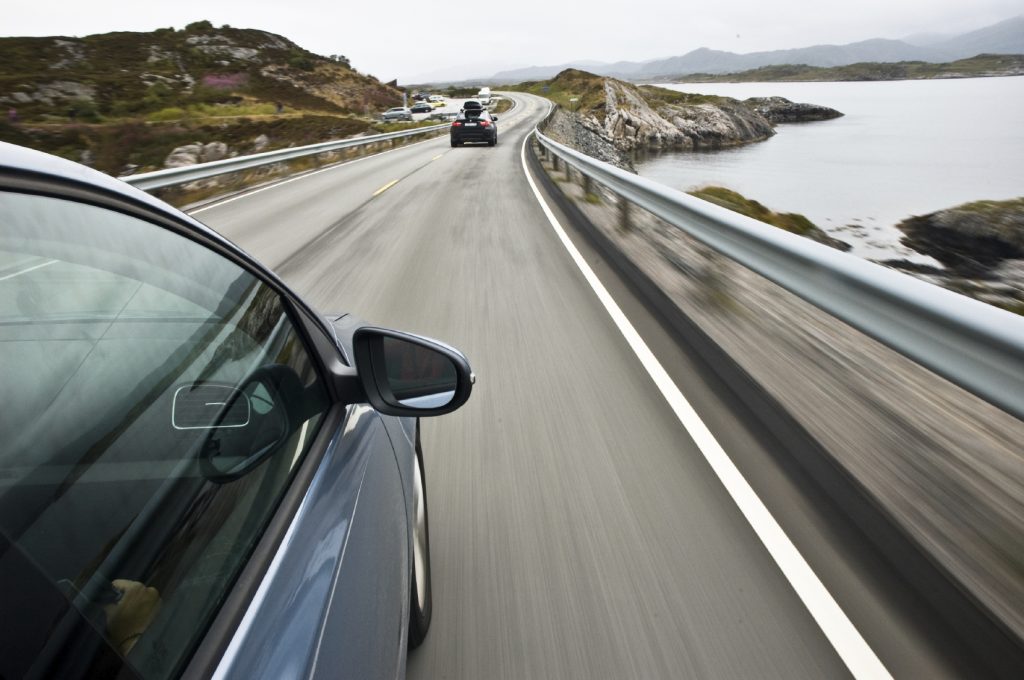
Speeding is the riskiest of aggressive driving behaviors – in fact, it is the greatest predictor of a crash, as a new study shows.
At the University of Waterloo, researchers looked at data from insurance companies in Ontario and Texas, which had clients with onboard diagnostic devices installed in their vehicles. They looked at four “aggressive” driving behaviors: speeding, hard braking, hard acceleration, and hard cornering. After analyzing 28 million trips, they found that speeding is a strong predictor of crashes, while “statistically significant links for the other kinds of aggressive driving couldn’t be established.”
In other words: speeding is where law enforcement, lawmakers, and insurance companies should be focusing their safety efforts.
California’s Basic Speed Laws
“No person shall drive a vehicle upon a highway at a speed greater than is reasonable or prudent having due regard for weather, visibility, the traffic on, and the surface and width of, the highway, and in no event at a speed that endangers the safety of persons and property.” (CVC § 22350) The main “speeding” law in California presupposes that drivers are responsible for their own choices. So they are, but proving what was “reasonable or prudent” after a collision can be complicated, which is why a personal injury lawyer will be so invaluable.
What About Speed Limits?
Santa Barbara County set speed limits after careful consideration, based on the roadway itself, traffic surveys, and insight from engineers. They are not set arbitrarily, because studies have found that setting unreasonably low speed limits, usually in an attempt to reduce accidents, makes some drivers ignore the signs while others go too slowly. This disparity in speed actually increases the danger of accidents.
Here are a few absolute limits, which may not be legally exceeded unless a higher speed has been posted by the California Department of Transportation or a local agency, based on an engineering and traffic survey.
- No person may exceed 65 miles per hour upon a highway.
- No person may exceed 55 miles per hour upon a two-lane, undivided highway.
Other speed limits are prima facie limits, which are considered “reasonable” under normal conditions. They are based on particular conditions, set by CVC § 22352, and considered well-known, thus they do not always have posted signage. They include:
- 15 miles per hour: For the last 100 feet of a railroad crossing, if the driver does not have a clear and unobstructed view of at least 400 feet in both directions down the tracks; For traversing the last 100 feet of a highway intersection without a stop sign or traffic signal, if the driver does not have a clear and unobstructed view of at least 100 feet along the crossing highways; For any alleyway.
- 25 miles per hour: On any non-state highway, business, or residence district; When approaching or passing any school grounds that are not separated by a fence, gate, or other physical barrier; When passing a senior center or facility used primarily by senior citizens with a “SENIOR” warning sign.
The factors that go into determining a speed limit for a given stretch of road include: the prevailing speeds of 85% of the traffic, as determined by engineering measurements; previous accidents; other road conditions not readily apparent to drivers; residential density; and pedestrian and bicyclist safety.
The Impact of High-Speed Crashes
Unfortunately, a high-speed crash is also more likely to be devastating to the victims. “As speeds get higher, crashes also result in more serious injury, for the driver who caused the crash as well as for the crash opponent,” according to the Institute for Road Safety Research. Crashes involve a quantity of kinetic energy being converted into an instant into heat and matter distortion, and the human body is particularly vulnerable to these forces. The higher the speeds, the larger the vehicles, the worse the outcome.
Though vehicles are better equipped with seatbelts, airbags, and crumple zones now more than ever before, a high-speed collision can still lead to serious trauma, such as occupant ejection, traumatic brain injury, and seatbelt syndrome (where the neck and abdomen can be lacerated internally by the protective restraint of a seatbelt).
There are several “driving roads” in and around Santa Barbara, from Toro Canyon to Highway 192, from the 154 to El Camino Cielo, from the 101 to Pacific Coast Highway. People love to head toward Solvang, Santa Ynez, Los Olivos, or Jalama Beach for a cruise with breathtaking views. However, if a driver chooses to speed on some of these roads, he is seconds away from a horrific accident.
If you are ever struck by an aggressive driver and left with serious injuries, speak to a Santa Barbara car accident attorney at NordstrandBlack PC. Our office is located on 33 W Mission Street, and locally we serve Oxnard, Camarillo, Ventura, San Luis Obispo, Goleta, Isla Vista, Santa Maria, Vandenberg, Santa Ynez, and Solvang. We accept cases through the United States.
Call (805) 962-2022 to set an appointment with a law firm that has over 29 years of experience, and has won millions of dollars for clients. Your consultation is absolutely free.
Sources:
ScienceDaily: Speed identified as the best predictor of car crashes
The Sacramento Bee: Who decides speed limits? Here’s the surprising answer